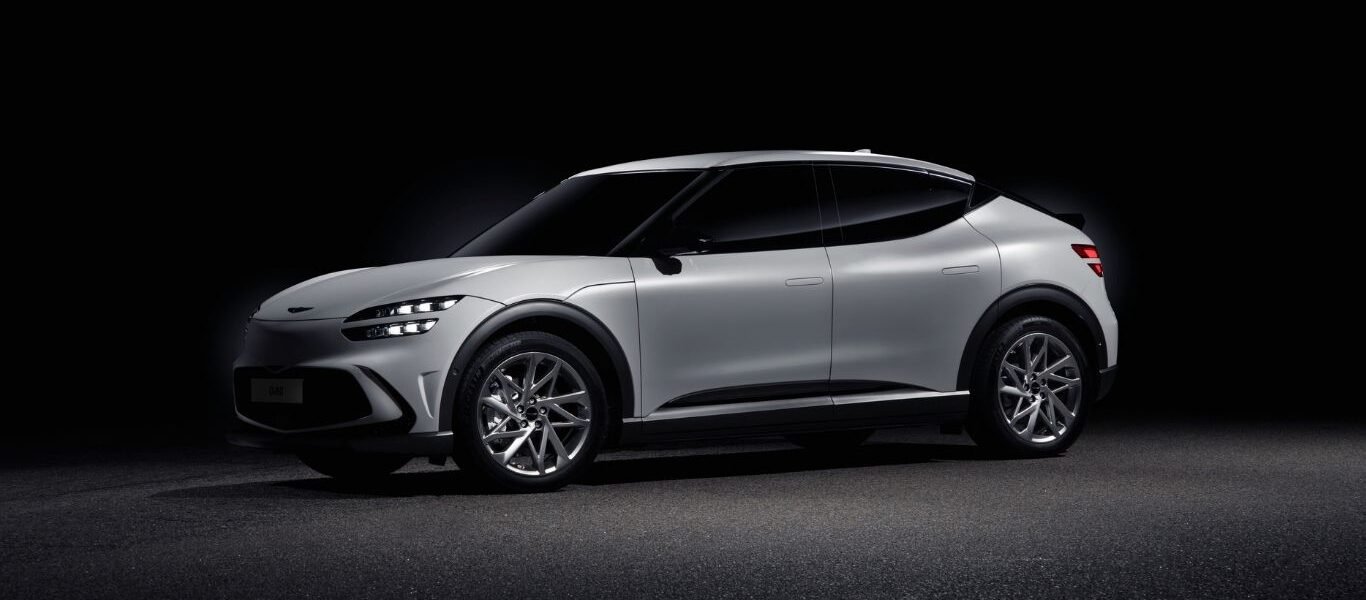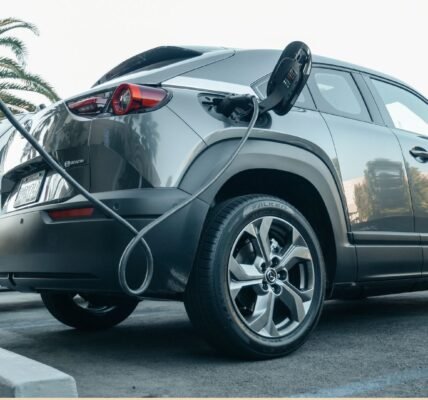The auto industry is entering a new era. Technology continues to drive rapid changes in the way we view and use vehicles. Today, innovations transforming automobiles are more exciting than ever, making cars smarter, greener, and safer. This blog explores how the latest advancements are shaping our driving experience. From electric power to artificial intelligence, these changes signal a new era for drivers and passengers alike.
Electric Power: The Shift Towards Zero Emissions
Electric vehicles (EVs) represent a major innovation transforming automobiles. EV technology has advanced significantly over the past few years. Today, electric cars can travel further on a single charge, and charging stations are easier to find. Many automakers, like Tesla and Nissan, focus on bringing EVs into the mainstream. With higher battery capacities, they aim to reduce range anxiety and attract more customers to sustainable driving.
More cities and businesses are installing fast-charging stations. These allow EVs to gain up to 80% charge in less than an hour. This network of chargers makes EVs more practical for long-distance travel. With zero tailpipe emissions, electric vehicles contribute to cleaner air and lower carbon footprints, aligning with global sustainability goals.
Autonomous Driving: Moving Towards Full Automation
Self-driving technology continues to progress as a major innovation transforming automobiles. Companies like Waymo and Tesla lead the way in developing semi-autonomous and fully autonomous systems. These technologies allow cars to handle certain tasks, such as highway driving or parking, without human intervention. Autonomous driving aims to make roads safer by reducing human error, which causes most accidents.
New levels of autonomy appear each year. Currently, many cars offer features like adaptive cruise control, lane-keeping assist, and automatic emergency braking. These tools help drivers maintain safe speeds and distances while reducing fatigue. The road to fully autonomous cars is long, but each step brings us closer to cars that can navigate without driver input.
Artificial Intelligence: Smart Systems for a Better Drive
AI is a powerful innovation transforming automobiles. With artificial intelligence, cars now offer features that improve convenience, safety, and efficiency. Voice assistants, like Amazon Alexa or Google Assistant, allow drivers to control navigation, music, and climate without taking their eyes off the road. This hands-free interaction keeps drivers focused and reduces distractions.
AI also powers advanced driver-assistance systems (ADAS), which alert drivers to road hazards, detect pedestrians, and monitor blind spots. For instance, collision detection systems can sense potential accidents and alert drivers to stop or steer away. These smart features make every journey safer and show how AI enhances our experience on the road.
Connectivity: Cars That Communicate
Connectivity is another exciting innovation transforming automobiles. Today’s cars come with built-in Wi-Fi, allowing passengers to stay connected on the go. Car connectivity lets vehicles communicate with smartphones, other vehicles, and even infrastructure, such as traffic lights. This network of connected devices creates safer, smarter roads.
One example of connectivity is Vehicle-to-Everything (V2X) communication. V2X technology allows cars to send and receive information about traffic, weather, and road conditions. This communication helps prevent accidents and improves traffic flow. Audi and Honda are already testing V2X in some cities. As connectivity grows, cars will become integral parts of smart city systems.
Sustainable Materials: Eco-Friendly Design Choices
Sustainability has become essential in the auto industry. Many manufacturers use eco-friendly materials to reduce their environmental impact. These materials, like recycled plastics and natural fibers, create durable interiors while reducing waste. Using sustainable materials is a key innovation transforming automobiles toward greener production.
Automakers like BMW and Ford are at the forefront of this trend. They use materials like recycled plastics for seats, carpets, and dashboards. This approach reduces waste and uses fewer resources. Additionally, plant-based leathers and organic fabrics are becoming popular, showing that carmakers value sustainability from design to production.
Improved Safety Systems: Protection for Everyone
Safety technology has seen remarkable growth. Today, cars offer advanced features that protect drivers, passengers, and even pedestrians. This innovation transforming automobiles focuses on making driving safer through technologies like collision avoidance and pedestrian detection.
Automatic emergency braking, lane departure warnings, and blind-spot monitoring have become standard in most new cars. These features help drivers avoid accidents and make the roads safer for everyone. Some cars also come with night vision and surround-view cameras, which improve visibility in challenging conditions. By focusing on safety, automakers prioritize the well-being of their customers and the public.
The Rise of Over-the-Air (OTA) Updates
Software updates are no longer limited to computers and phones. Over-the-air (OTA) updates now bring new features to cars without a trip to the dealership. This innovation transforming automobiles keeps car systems up-to-date and helps drivers access new functions instantly. Tesla pioneered this technology, and other automakers now follow suit.
With OTA updates, manufacturers can fix software bugs, update navigation systems, and improve fuel efficiency. For example, some EVs receive battery improvements through software, increasing their range. OTA updates allow drivers to keep their cars current and prevent technological obsolescence.
Advanced Infotainment: Enhanced In-Car Experiences
Infotainment systems have evolved from basic radios to interactive touchscreens. This innovation transforming automobiles enhances the driving experience by giving drivers access to music, navigation, and more. Modern infotainment systems often feature high-definition screens, intuitive controls, and voice recognition.
Today’s infotainment systems also support Apple CarPlay, Android Auto, and Bluetooth, making it easy to connect smartphones. Drivers can access apps, make calls, and enjoy streaming services. With these systems, the car becomes a multimedia hub, improving convenience and entertainment on every drive.
Battery Innovation: Pushing the Limits of EVs
Battery technology is crucial to the success of electric vehicles. New advancements in batteries are a significant innovation transforming automobiles. Solid-state batteries are one example, offering higher energy densities and longer lifespans than lithium-ion batteries.
Better batteries increase the range of EVs and make them more accessible to drivers who worry about charging. Companies like Toyota and QuantumScape are working on these next-gen batteries. Improved battery tech will support the growth of EVs and reduce the need for frequent charging stops, making electric cars more convenient for everyday use.
Hydrogen Power: A Complement to Electric Cars
While electric cars dominate the green vehicle market, hydrogen power is a promising alternative. Hydrogen fuel cells generate electricity with zero emissions, producing only water vapor. This clean energy source represents an exciting innovation transforming automobiles and is especially suited for long-haul travel.
One example of connectivity is Vehicle-to-Everything (V2X) communication. V2X technology allows cars to send and receive information about traffic, weather, and road conditions. This communication helps prevent accidents and improves traffic flow. Audi and Honda are already testing V2X in some cities. As connectivity grows, cars will become integral parts of smart city systems.
Sustainable Materials: Eco-Friendly Design Choices
Sustainability has become essential in the auto industry. Many manufacturers use eco-friendly materials to reduce their environmental impact. These materials, like recycled plastics and natural fibers, create durable interiors while reducing waste. Using sustainable materials is a key innovation transforming automobiles toward greener production.
Automakers like BMW and Ford are at the forefront of this trend. They use materials like recycled plastics for seats, carpets, and dashboards. This approach reduces waste and uses fewer resources. Additionally, plant-based leathers and organic fabrics are becoming popular, showing that carmakers value sustainability from design to production.
Improved Safety Systems: Protection for Everyone
Safety technology has seen remarkable growth. Today, cars offer advanced features that protect drivers, passengers, and even pedestrians. This innovation transforming automobiles focuses on making driving safer through technologies like collision avoidance and pedestrian detection.
Automatic emergency braking, lane departure warnings, and blind-spot monitoring have become standard in most new cars. These features help drivers avoid accidents and make the roads safer for everyone. Some cars also come with night vision and surround-view cameras, which improve visibility in challenging conditions. By focusing on safety, automakers prioritize the well-being of their customers and the public.
The Rise of Over-the-Air (OTA) Updates
Software updates are no longer limited to computers and phones. Over-the-air (OTA) updates now bring new features to cars without a trip to the dealership. This innovation transforming automobiles keeps car systems up-to-date and helps drivers access new functions instantly. Tesla pioneered this technology, and other automakers now follow suit.
With OTA updates, manufacturers can fix software bugs, update navigation systems, and improve fuel efficiency. For example, some EVs receive battery improvements through software, increasing their range. OTA updates allow drivers to keep their cars current and prevent technological obsolescence.
Advanced Infotainment: Enhanced In-Car Experiences
Infotainment systems have evolved from basic radios to interactive touchscreens. This innovation transforming automobiles enhances the driving experience by giving drivers access to music, navigation, and more. Modern infotainment systems often feature high-definition screens, intuitive controls, and voice recognition.
Today’s infotainment systems also support Apple CarPlay, Android Auto, and Bluetooth, making it easy to connect smartphones. Drivers can access apps, make calls, and enjoy streaming services. With these systems, the car becomes a multimedia hub, improving convenience and entertainment on every drive.
Battery Innovation: Pushing the Limits of EVs
Battery technology is crucial to the success of electric vehicles. New advancements in batteries are a significant innovation transforming automobiles. Solid-state batteries are one example, offering higher energy densities and longer lifespans than lithium-ion batteries.
Better batteries increase the range of EVs and make them more accessible to drivers who worry about charging. Companies like Toyota and QuantumScape are working on these next-gen batteries. Improved battery tech will support the growth of EVs and reduce the need for frequent charging stops, making electric cars more convenient for everyday use.
Hydrogen Power: A Complement to Electric Cars
While electric cars dominate the green vehicle market, hydrogen power is a promising alternative. Hydrogen fuel cells generate electricity with zero emissions, producing only water vapor. This clean energy source represents an exciting innovation transforming automobiles and is especially suited for long-haul travel.





